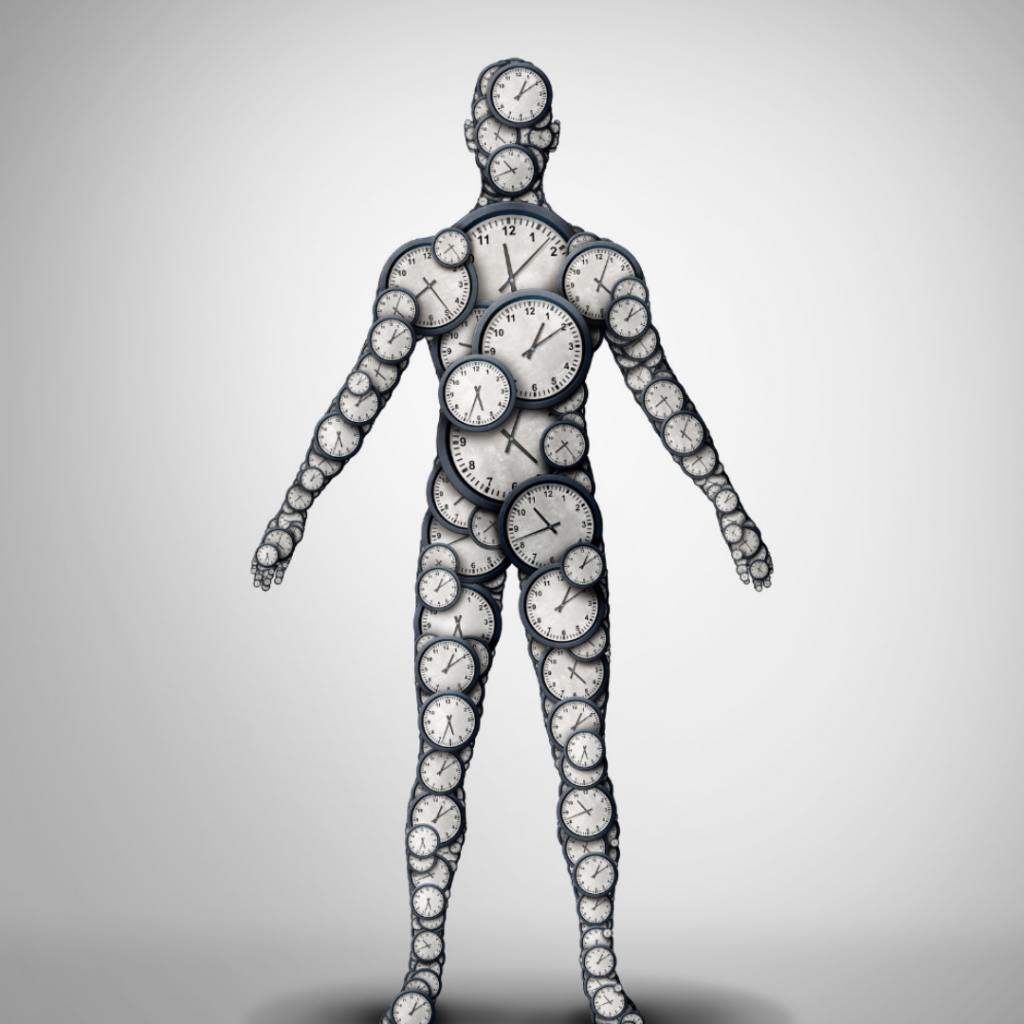Do you have a preference for a bedtime? Or do you tend to complete certain activities at a specific time of the day? Have you given much thought to “why” this may occur? For this blog, we are going to take a bit of a dive into the brain and its role in our internal clock. But don’t worry, we won’t go too deep! Understanding the basics of our body’s clock can help us make decisions to optimize our personal brain health and wellness.
Over the years, I have learned the “sweet spot” to tackle more demanding tasks. For me, this is around 11:00 am (ish). Personally, I am not an early morning person for high-demand tasks and I would not dare pay a bill late in the evening due to being tired from the day (it is my money, after all).
Many of us have preferences or drives for particular tasks or functions, including when we eat our meals, go to bed, and perform mentally or physically demanding tasks. There is a common saying across many fields that “everything starts and stops with our brains.” This notion extends from our thoughts to our behaviors to our decisions to some of our biological functions, and the list goes on. Our brain is highly involved in many aspects of our daily lives, whether we take the time to acknowledge its role or not.
Brain Basics
Our body’s internal 24-hour clock is known as a circadian rhythm. This biological pattern is driven by the suprachiasmatic nucleus (SCN) in the hypothalamus, which coordinates the timing of biological events, like hormone release, body temperature, sleep and digestion. This particular part of the brain is located in the hypothalamus, which is mainly responsible for keeping our body relatively stable (often referred to as homeostasis).
The SCN is commonly referred to as the body’s “master clock,” as it governs our main functions. This cluster of over 20,000 nerve cells coordinates commands to other parts of the body to activate their pathways, depending on the time of the day. (Keep in mind, depending on the cells, the SCN is communicating with those cells also have their own internal rhythms. This is why we don’t get the signal to “be hungry” in the middle of the night. The SCN has coordinated the rhythms to work together.) In a simplistic way, the SCN area is the pacemaker for our brain.
Practical Tips
Now that we recognize that our body’s internal clock regulates our biologically driven events such as our sleep, digestion, body temperature, hormone release and more, here are a couple of simple things we can do to help it stay on track.
1. Pay attention to the influence of light. Light has the ability to impact our circadian rhythms along with our sleep/wake cycle. Try to get some type of light (natural light is best) as soon as you can when you first wake up. Light exposure assists with our level of alertness and energy. When trying to fall asleep, minimize exposure to light, as this helps with the release of melatonin, the sleep hormone. The timing of light with our wake and sleep is important and often overlooked.
2. Recognize your natural tendencies. Each of our body’s clocks are slightly different and nuanced, such as our preference for sleep, mealtime and movement. Take note of your personal preferences and be open to making small shifts that could support your well-being, such as smaller evening meals or skipping a late-night snack, adjusting a bedtime for optimal rest, or exercising at a different time of day for peak benefits. I encourage you to keep an open mind and see what works best for you. Try a morning/eveningness questionnaire that may help you recognize your natural preferences and offer some guidance in this area. You can access an online questionnaire here or print one here.
Our bodies and brains have so many rhythms that work in harmony for our optimal brain health — mind, body and spirit. When we take time to acknowledge some inner workings, such as our internal clock, there may be opportunities to reset, recalibrate or rewind to an old or new health practice that supports our personal brain care. I hope this blog is a reminder of the daily drives we have within to work in balance toward our optimal well-being.
In brain health & wellness,
Krystal
Image courtesy Canva.


